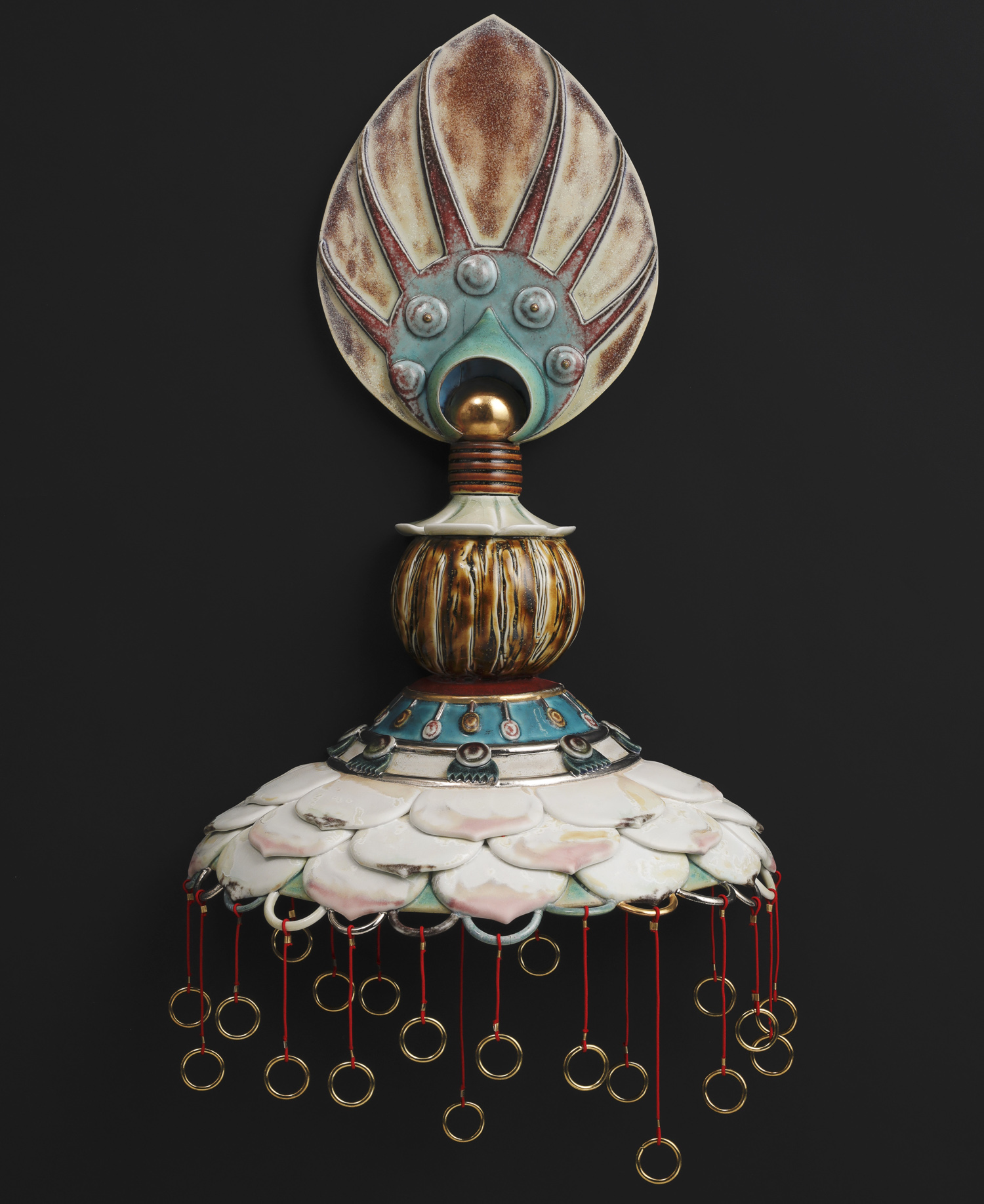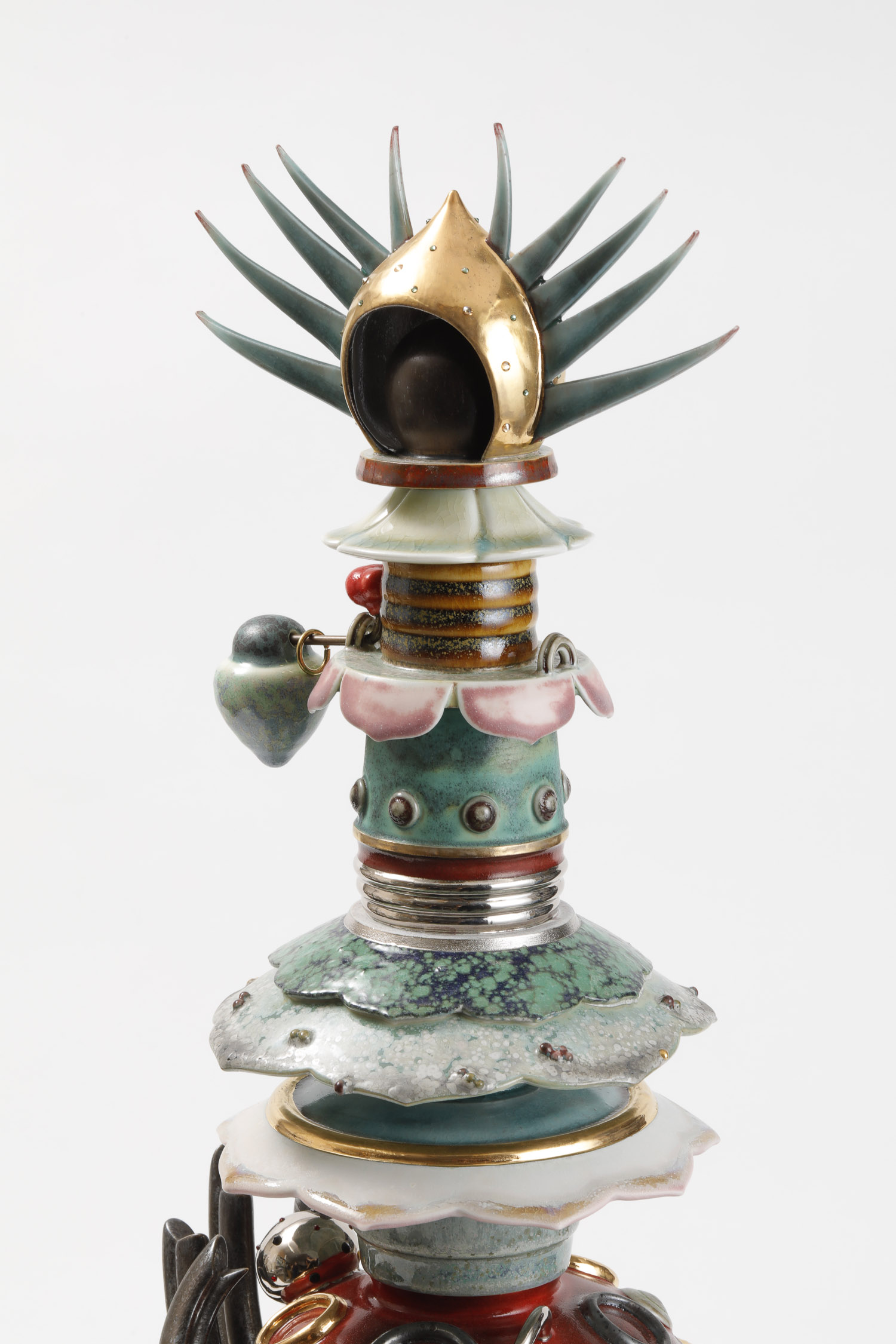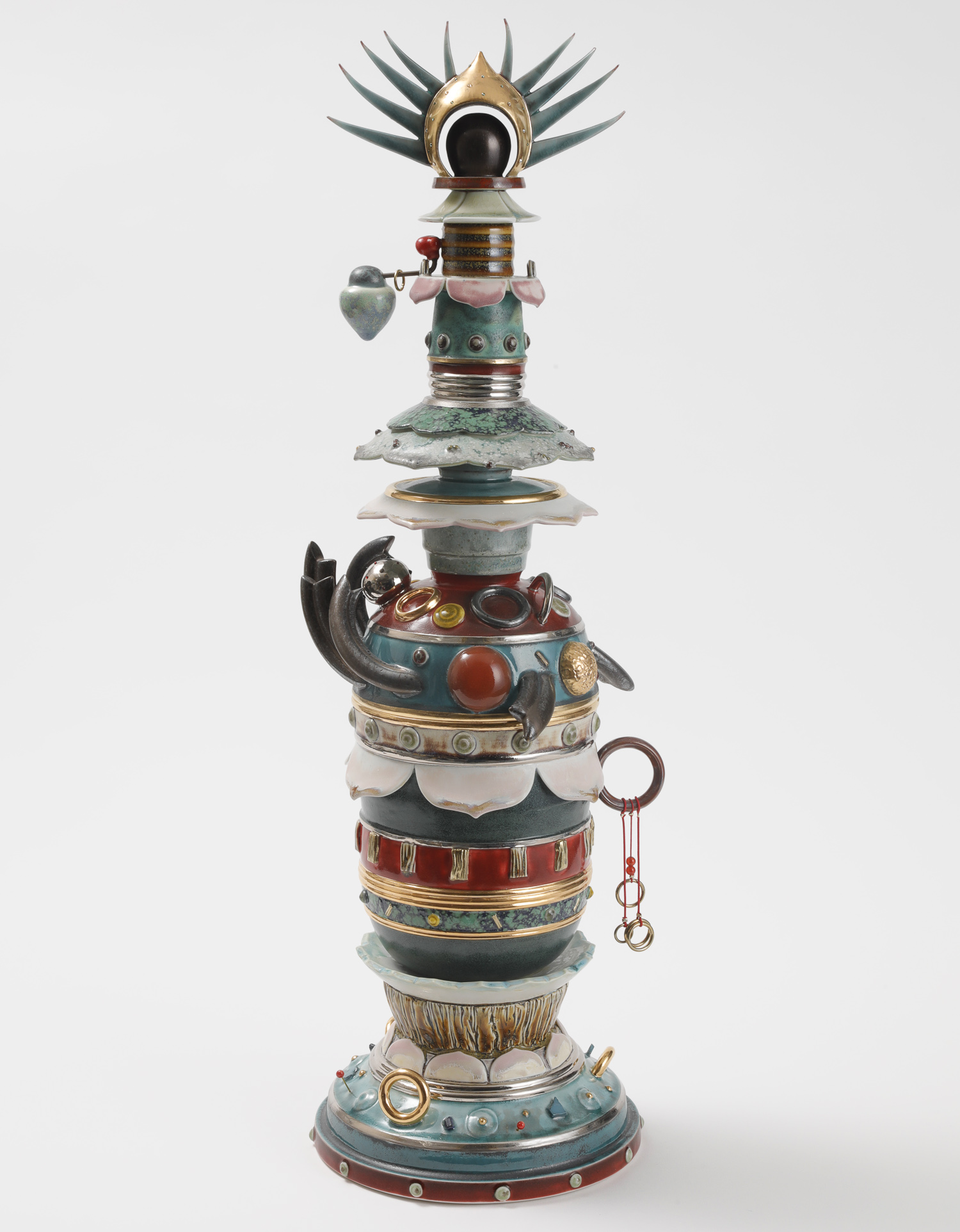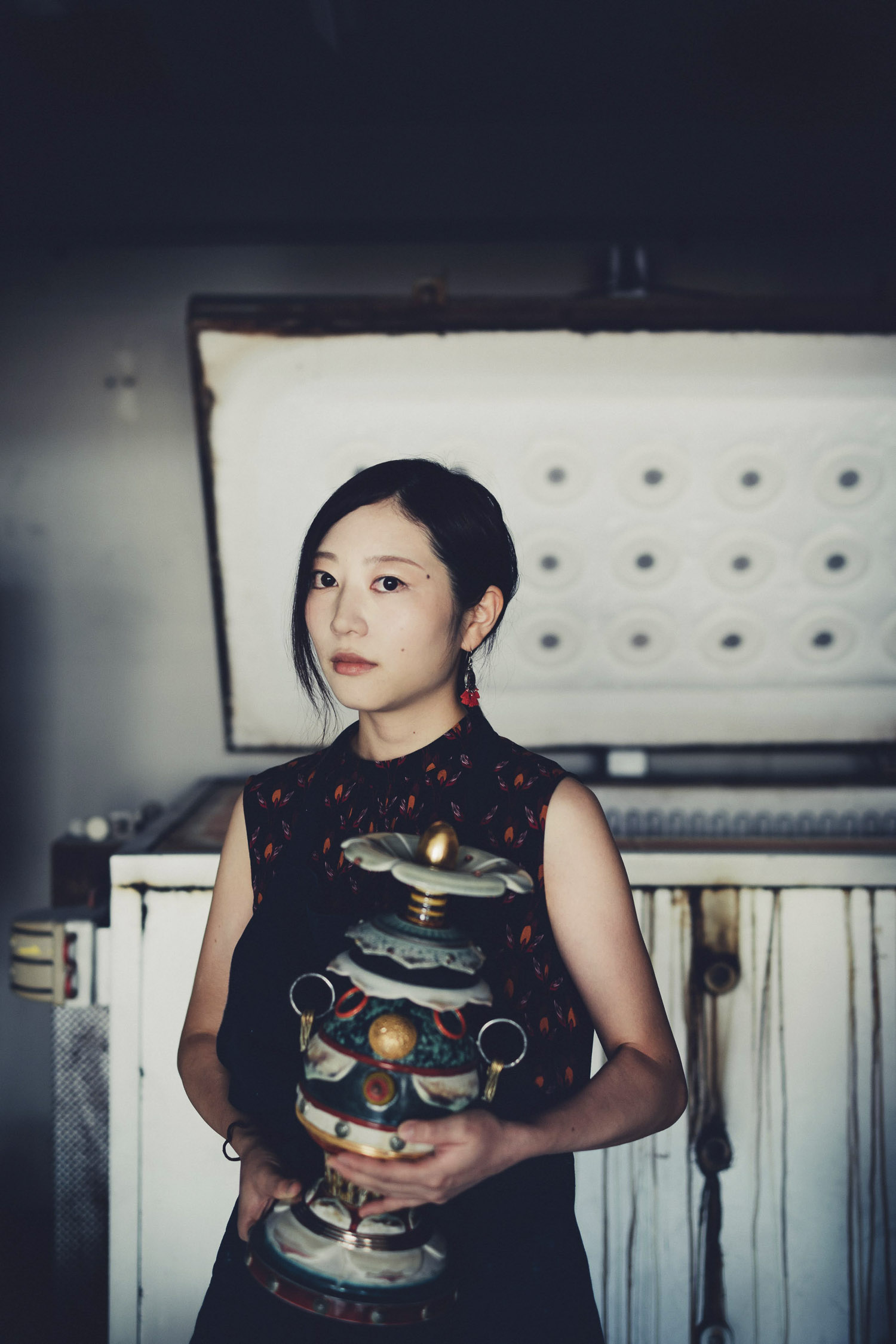Interview: Yuka Nishihisamatsu
Articles
Yuka Nishihisamatsu (b.1992) is an artist from Kyoto, Japan. Mainly creating artwork with porcelain.
We interviewed Nishihisamatsu about herself.
What was your upbringing?
I grew up in a town called Kameoka, Kyoto. People will think it is the countryside because it is far from Kyoto City; however, it is very comfortable to live there and has no difficulty to live with. This town is known for its very dense fog, and I still remember being scared when I could not see anything in front of me when I was going to elementary school because I was surrounded by a white fog. They are hosting Kameoka KIRI Art Cultivation every year, and I am participating in it as a local artist as well.
I was born with parents who were painters, and I remember following them and going for sketches many times from an early age. My father is a painter of nature and landscapes, so I went to see many different kinds of scenery. I was drawing hard on my small sketchbook that I always carried with me, right next to my father, who was facing his subject for hours. I also visited temples and shrines in Kyoto a lot. I remember I drew many of those stone Buddha statues, Komainu (a Shine guardian dog statue), and Buddha sculptures.
My mother paints a lotus colony, insects, wildflowers, and weeds with the theme of reincarnation and combines those motifs into one picture. There were many insects, flowers, and unique-shaped vegetables as motifs for sketches in my house.
Also, my mother hosted a painting lecture so that I always had a creative environment right next to myself. Now that I think about it, I did not notice that the thoughts and environment that I grew up in influenced my creativity and helped me form myself. I think this is how I developed a heart deeply rooted in art.
I entered art high school, pursued Japanese painting, and painted for three years. I also had an interest in ceramics at that time, so I entered Kyoto University of Arts and majored in the crafts department. I found this different feeling from a 10kg chunk of soil than the clay that I was touching when I was a child. If I have to say, I was better at drawing than crafting. I felt this sensation of soil magically fitting into my hand when I touched it, and the vision of what I wanted to create came to mind.

When you grew up, what was your interest as a child/adult?
When I was in elementary school, I was into animated shows based on a girls’ comic at the time. The story is about how the main character, who at first glance is an ordinary high school student, is the reincarnation of Joan of Arc, and with the help of an angel, she transforms into a phantom thief and seals away the demons possessing beautiful objects and works of art. The content was very interesting, as angels, gods, demons, etc. appeared, but I was interested in and admired the tools and key items for transformation, such as the rosary. There may be hidden shapes in my work that are reminiscent of this transformation item. Also, the concept of reincarnation is naturally woven into the story. The repeated use of the keyword “deceptive beauty,” in which the devil lurks within beautiful things, also left an impression on me. Ever since I was young, I have had the desire to transform into something other than myself. Perhaps because of this, I have been interested in fashion and accessories since I was in high school. I also liked collecting Asian miscellaneous goods because I liked expressing things using color and brightly colored things.
How did your career as an artist begin?
After I studied ceramic art in university and graduate school, I was possessed by the charm of soil as a material and have been creating artwork. I decided to keep creating my work when one of the galleries that took care of me once recommended me for Kyoto Art for Tomorrow (an award show in Kyoto) during this time I was trying to decide whether I should get a job or go to graduation school. I told myself that if I go to graduate school, I need to be an artist. I wanted to create my base as an artist to keep creating artwork as much as possible after finishing my graduation program. I proactively participated in exhibitions during those two years. Because I could not prepare my studio or base of facilities right after finishing the master’s degree, I somehow managed to keep creating and showing my work with a part-time job at the university. I had this feeling of scarcity that came from being away from creating artwork and keeping my mind on creating artwork. Soon after, I received some opportunities to exhibit my works and broaden my connection with customers, art-related people, and artists.

Photo by Takeru Koroda
What is your inspiration?
When I first started creating ceramic artwork, I was interested in the shapes of buildings, landscapes, and cities, so I created works based on drawings, but after completing my graduation work, I began to create works that were closer to my inner self. I also incorporate accessories, clothes, and ornaments that I have always been interested in to decorate my body as decorative elements in my works. From a decorative perspective, I am interested in the forms and colors of heirloom items and symbolic objects with historical and cultural backgrounds. The motifs I have used in my works so far include armor and other weapons, accessories, ritual tools, and bronzeware. There are also decorations on the roofs and fittings, as well as Buddhist utensils, that can be seen at temples and shrines. I feel that while they have uses and functionality, they also have an interesting and beautiful form. In addition to the historical background and meaning of objects, I am particularly attracted to superficial aspects such as their shape, decoration, and color. Works are created by shaping them with clay, creating designs, imitating decorations, and reconstructing them. I believe that through creation, we can have an opportunity to reconsider universal values that remain unchanged even as times and lifestyles change. I also believe that through the creation of works, I can learn about what kind of culture flows within me.

Who is your favorite artist?
When it comes to potters, I like Adrian Sachs. I feel that the sculptural interest, sense of color, and combination of different materials with soil are unique and stylish. I’ve always loved painting, so when it comes to painters, I’d say Hieronymus Bosch. I am very influenced by Boss’s paintings. When it comes to Japanese artists, I like the world depicted by Japanese painter Tatsumi Hashimoto. Based on the ancient Japanese religious view that God dwells in all things, he is an artist who humorously depicts the nature and monsters of his hometown, and you will be drawn into his unique worldview.
What excites/fascinates you the most when you create your work?
Clay is a material with plasticity, and although it is a single material, it has countless expressions, so it is essential to constantly discover it in daily production and to understand it over a long period. Additionally, by firing the item in a kiln and leaving the finish up to them, the result may sometimes be beyond imagination.
Additionally, ceramics undergo various changes during firing in a kiln, such as distortion and shrinkage of the clay, and chemical changes in the glaze.
By firing, we reach a realm beyond human understanding that is impossible to intervene in, and we feel a certain mystique in the works that come out of the kiln.
My works are characterized by the expression of a wide variety of glazes, and when it comes to handling the glazes, he often applies them precisely according to their surfaces and shapes. I need to go. I believe that by layering glazes based on the characteristics of glazes, the colors below will influence the colors above, creating harmony and creating expressions that cannot be expressed with paint or other materials.
I feel that this is similar to the expression and handling of mineral pigments in Japanese paintings that I learned about in the past. I was able to achieve a balance between leaving the result to the chance that occurs in the kiln by intentionally allowing it to protrude and overcoating it, leaving the result to the chemical changes that are complex and uncontrollable, and controlling the material as I wish. When I can create a piece of work, I feel an indescribable joy.

Profile
Born in Kameoka City, Kyoto Prefecture in 1992. After graduating from the Kyoto City University of Arts Graduate School of Fine Arts, majoring in ceramics, she has been based in Kyoto. She continues to be active, participating in art festivals held in her hometown of Kameoka. She reconstructs and reinterprets things with history, inherited items passed down to the present day, indigenous culture, religious symbols, etc. by replacing them with the material of earth.
Related Links
There are no related links.
